Key takeaways
- Understanding lens characteristics, such as focal length and aperture, enhances creative possibilities and impacts composition.
- Experimenting with different types of lenses—wide-angle, telephoto, and prime—offers unique perspectives and storytelling opportunities.
- Patience and practice are vital in mastering lens use, as they reveal subtle differences in image quality and composition.
- Using lenses that challenge your usual approach encourages creative growth and deeper engagement with photography.
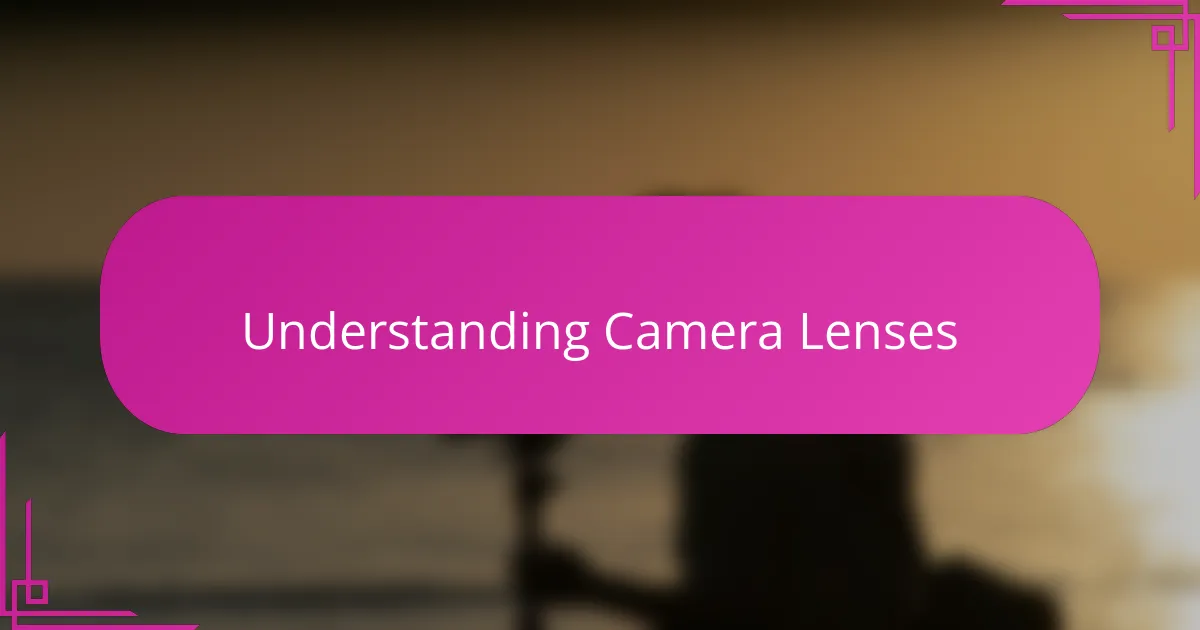
Understanding Camera Lenses
Understanding camera lenses is like getting to know the eyes of your camera. Each lens has its own personality—whether it’s a wide-angle that captures sweeping landscapes or a telephoto that brings distant subjects up close. Have you ever felt that thrill when you switch lenses and suddenly your entire perspective changes? I have, and it’s a game-changer.
In my experience, the focal length is the heart of what makes lenses so fascinating. It determines how much of the scene you see and how subjects relate to the background. Playing around with a 50mm prime lens made me appreciate simplicity; it’s almost like looking through a natural window, sharp and true-to-life.
Another aspect that often gets overlooked is the lens aperture. Think of it as the eye’s pupil, controlling how much light enters and shaping the depth of field. Experimenting with a fast lens, like f/1.8, opened up creative possibilities I hadn’t imagined—blurring backgrounds and focusing attention where I wanted. It makes me wonder, how many shots have I missed because I didn’t understand this subtle but powerful tool?
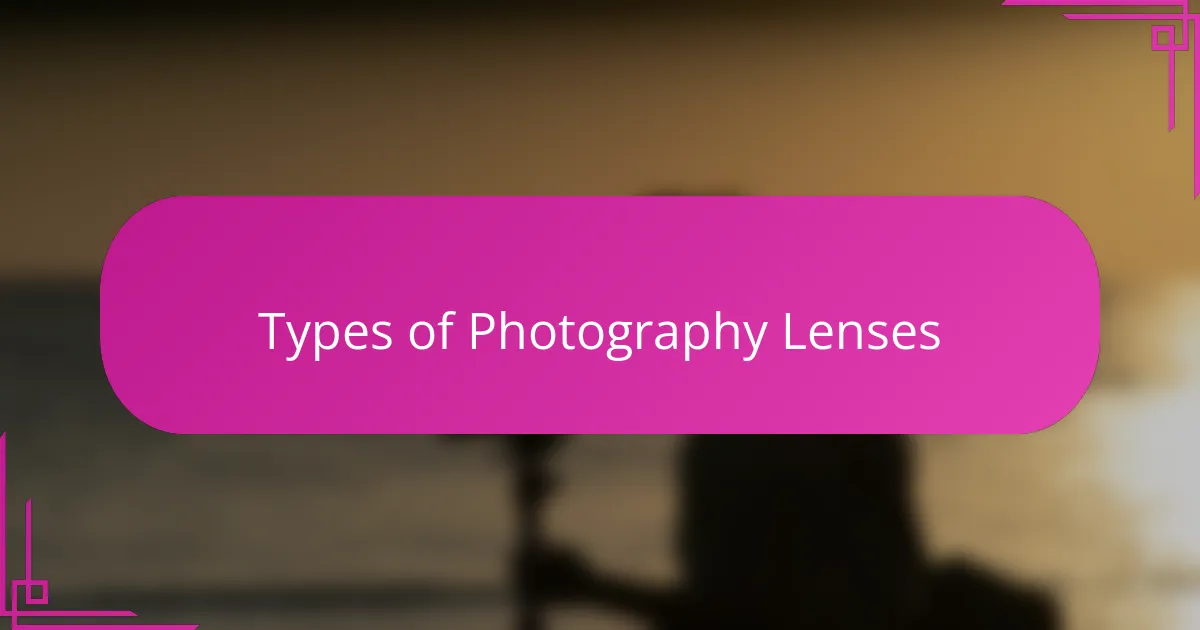
Types of Photography Lenses
When I first started exploring different lenses, I quickly realized there are several main types—each designed for a unique purpose. Wide-angle lenses, for example, have this incredible ability to capture vast scenes, making them perfect for landscapes or tight interiors. I remember shooting a city skyline with one, and the sheer breadth of the view left me breathless.
Telephoto lenses, on the other hand, bring faraway subjects right into your frame. I have to admit, the first time I used a telephoto at a wildlife park, I felt like I was sneaking up on animals without disturbing them. It’s that distance compression and background blur that makes everything pop in a way that feels almost magical.
Then there are prime lenses—fixed focal length beauties that force you to move and think creatively, rather than zooming with your lens. My 50mm prime lens quickly became my favorite; its sharpness and natural perspective made me see everyday scenes with fresh eyes. Have you ever noticed how changing your lens can shift not just your frame, but your whole approach to capturing a moment? I find that incredibly inspiring every single time.
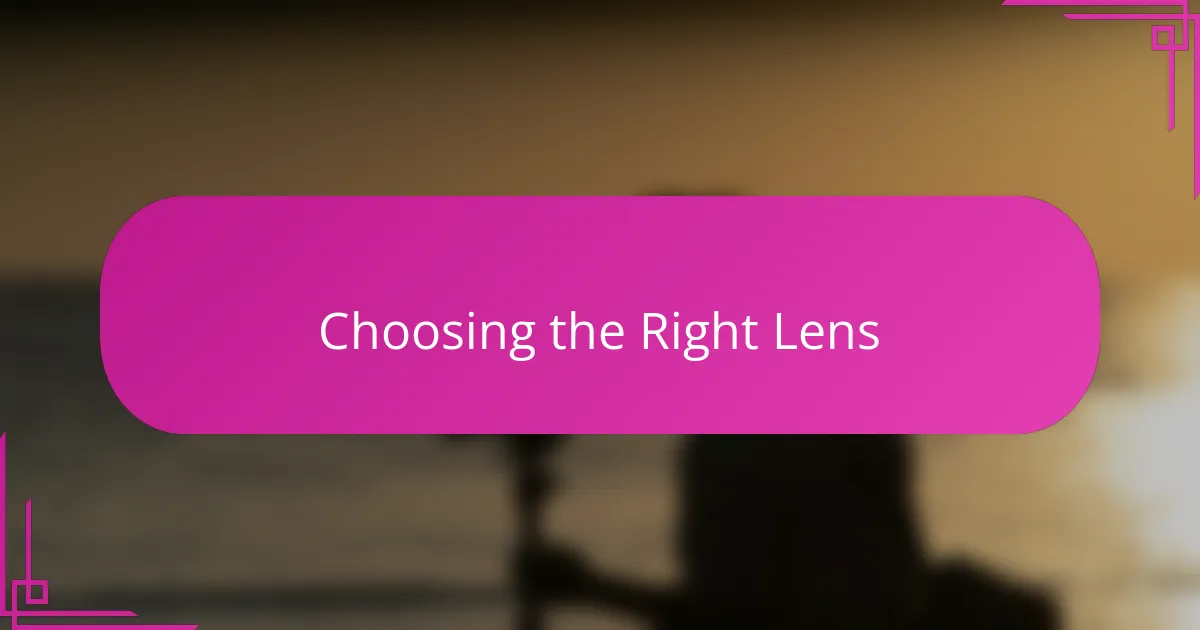
Choosing the Right Lens
Choosing the right lens often feels like matchmaking—finding the one that clicks with your style and the story you want to tell. I remember hesitating between a versatile zoom and a fast prime, wondering which would serve me better on an upcoming trip. In hindsight, that decision shaped not just my shots, but how I moved and interacted with my subjects.
I’ve learned that knowing what you want to capture makes all the difference. Are you chasing sweeping landscapes that need a wide-angle lens, or intimate portraits that call for a shallow depth of field? Asking yourself these questions helps narrow down the overwhelming choices and brings clarity to your creative vision.
Sometimes, it’s about experimenting without fear—trying lenses that don’t seem like your style at first. I recall picking up a macro lens on a whim and discovering a whole new world in tiny details I had overlooked. Choosing a lens isn’t just technical; it’s part of the adventure in learning to see differently through your camera.
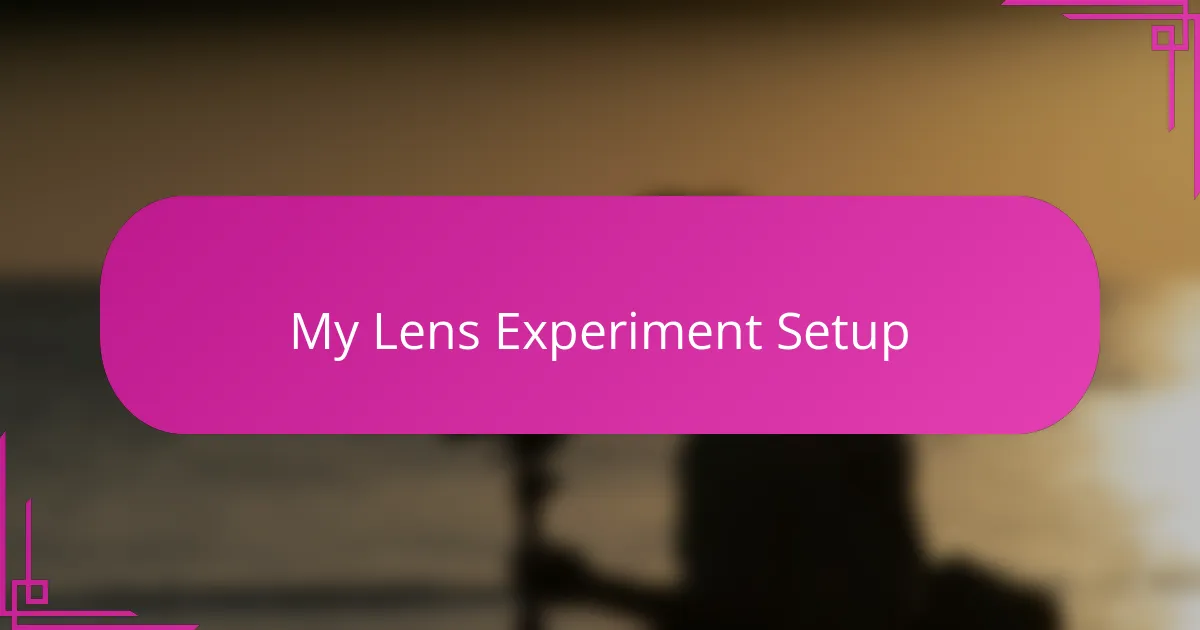
My Lens Experiment Setup
Setting up my lens experiments was less about rigid planning and more about curiosity guiding me. I laid out my collection—from a wide-angle to a telephoto—on my desk, eager to test them under various lighting and subject conditions. Have you ever had that moment when just looking at your gear sparks a flood of ideas? That’s exactly how it felt for me.
To make the comparisons fair, I used the same camera body and controlled as many variables as possible—same ISO, shutter speed, and shooting environment. This helped me really notice the subtle differences each lens brought to the frame. It’s fascinating how a small change in setup can reveal new layers in your photos.
One experiment that stood out was swapping lenses rapidly during street photography walks. Carrying them all was a challenge, but switching on the fly forced me to think fast and stay creative. It’s amazing how changing lenses can shift not only your composition but also your mindset in the moment.
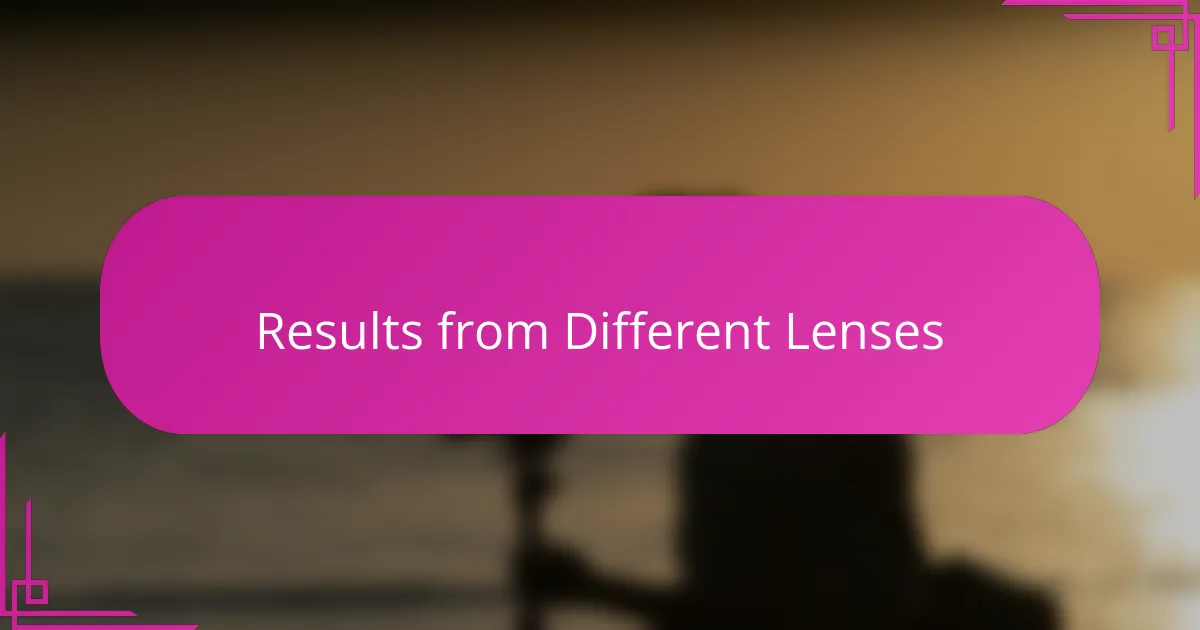
Results from Different Lenses
The results I got from trying different lenses were surprisingly eye-opening. For instance, my favorite 50mm prime lens delivered crisp, clean images with a natural feel that made portraits truly intimate. On the other hand, switching to a wide-angle lens instantly transformed my landscapes, giving them a grand, expansive vibe that felt almost cinematic.
I vividly recall how a telephoto lens completely changed my approach to photographing wildlife. Suddenly, I could capture animals in sharp detail from a distance without disturbing them, which brought a new layer of storytelling to my shots. It’s fascinating how each lens seems to invite a different way of seeing and interacting with the subject.
Have you ever noticed how your emotions shift with the lens you use? I did. Using a macro lens pulled me into a microscopic world of textures and details I never paid attention to before. That close-up perspective made me appreciate the small things in life, reminding me that photography is not just about scenes but also about discovering hidden beauty.
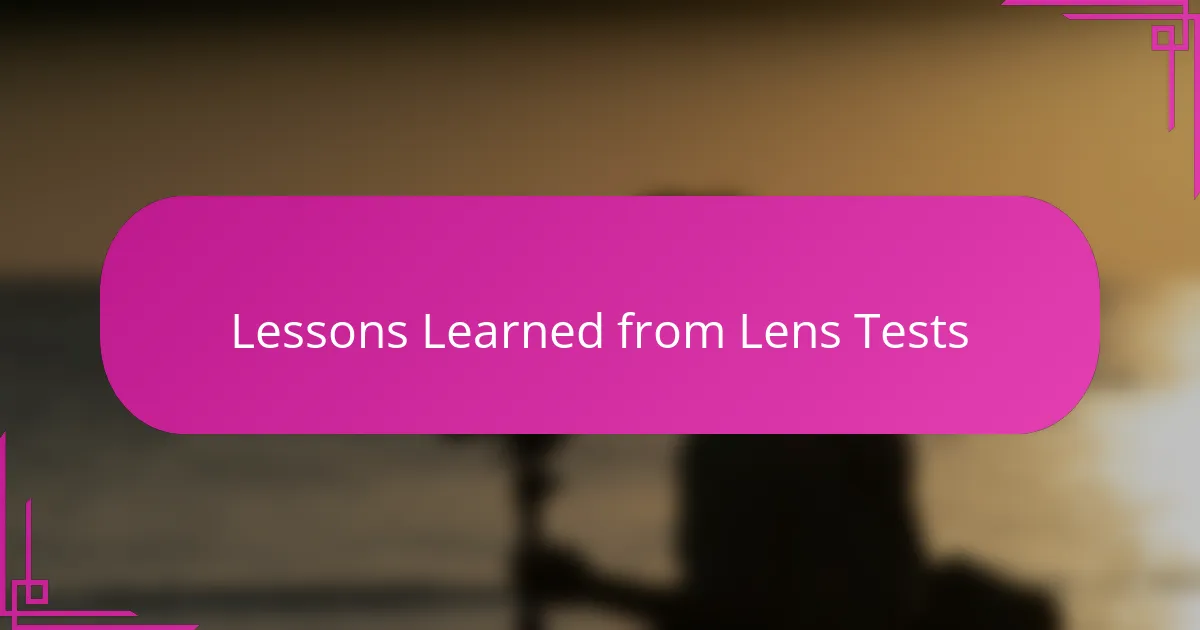
Lessons Learned from Lens Tests
Through these lens tests, I realized how much a lens can shape not just a photo but also my entire creative mindset. Have you ever felt that subtle shift in how you think about framing or light simply by changing your lens? That awareness deepened my appreciation for the tools themselves, beyond just technical specs.
One lesson that stuck with me was the importance of patience—waiting for the right moment to see how a lens truly performs in different settings. Early on, I rushed through tests, but slowing down revealed nuances in sharpness, color rendition, and bokeh that I hadn’t noticed before. It’s like getting to know a new friend; the more time you spend, the more they reveal about themselves.
Lastly, I learned that no lens is perfect for every shot, and that’s okay. Each lens brings strengths and quirks that push you to adapt and experiment. Isn’t it exciting to think that your choice of lens can challenge you to grow as a photographer? That’s a lesson I keep returning to with every new glass I try.
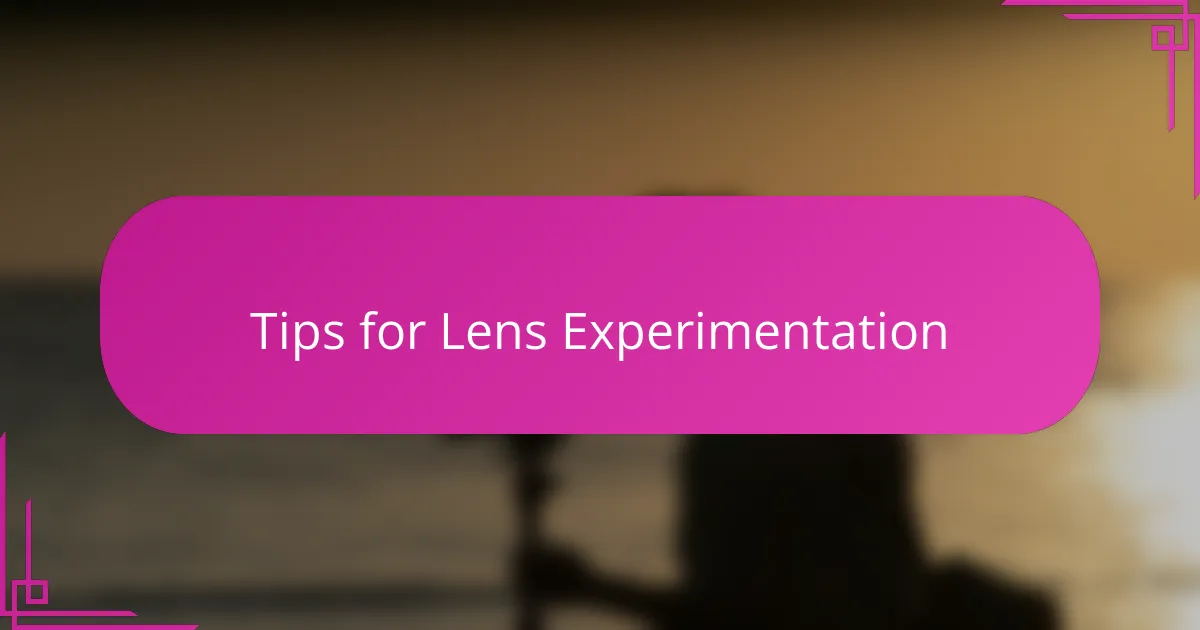
Tips for Lens Experimentation
When I first started experimenting with lenses, I found it incredibly helpful to shoot the same subject multiple times using different lenses. This side-by-side comparison made subtle differences pop out, and it helped me understand how focal length and aperture work together to create unique images. Have you tried this method? It’s like having a mini visual workshop right in your own hands.
Another tip I swear by is to embrace the limitations each lens imposes. For example, using a prime lens with a fixed focal length forced me to physically move around more, which sparked new creative angles I wouldn’t have considered with a zoom. Challenging yourself in this way can really open up fresh perspectives, don’t you think?
Lastly, don’t shy away from mixing in less familiar lenses just for fun. One time, I randomly grabbed a vintage manual focus lens and found that slowing down to focus made me more intentional with each shot. Experimenting like this turns lens play into a meditative practice, deepening not only your skills but also your connection with the photography process.